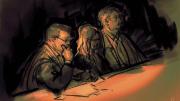In 2019, artist Susan Bin ’16 spent three months in front of what she called “the worst easel in the world” sitting on “the worst chair” in “the worst lighting.” No, she was not in a bunker or an attic; she was at Tokyo Disneyland. For 12 hours a day, Bin churned out “live silhouettes”: patrons sat for portraits and she swiftly cut their likenesses out of paper. Despite the monotony, she found magic. “It’s not just creating art,” she says. “You have to create this performance between you and the guest.” Now that she’s “free from the mouse,” the multitalented Bin is trying to revive this rare art form.
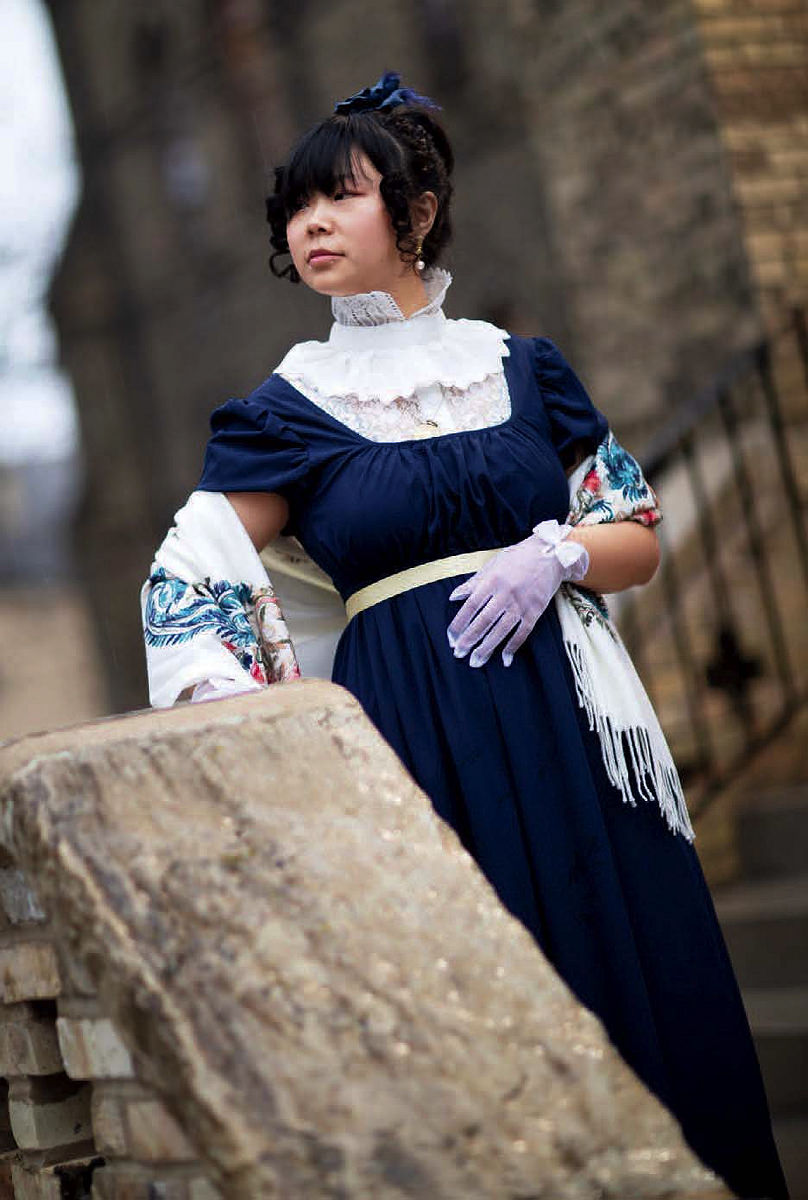
Susan Bin in costume
Photograph by M.G.Norris Photography
She describes her artistry as a spiderweb. Her work ranges widely: oil paintings, animations, film storyboards, fashion illustrations, court sketches, and silhouettes. These different outputs “intertwine and build on each other,” she says. “I don’t think of myself as an artist. I just have this toolkit, a skill set of things that are obviously in the artistic, visual medium, but I’m a person that has a lot of interest in different things.” Her livelihood is varied, too—she makes money from her online storefront, freelance work, contracted storyboards, and commissioned live silhouette events (conventions, weddings, festivals). Regardless of the genre, Bin guides her art with an intense curiosity and restlessness.
Geographically, her life has had little continuity: often moving for work (first her father’s, then her own), she has lived in New Zealand, Australia, Canada, Japan, France, China, and across the United States, where she is now based in Dallas. Instead, art has been the constant. She began learning oil painting in grade school and continued throughout childhood. She wanted to attend art school but got into Harvard, “and the story goes, you can’t say no to Harvard!” She concentrated in visual and environmental studies (now the department of art, film, and visual studies), focusing on film theory and history. Off campus, she took technical virtual development courses to study animation and spent summers interning at DreamWorks Pictures and in the comic arts department of Legendary Entertainment, another film company.
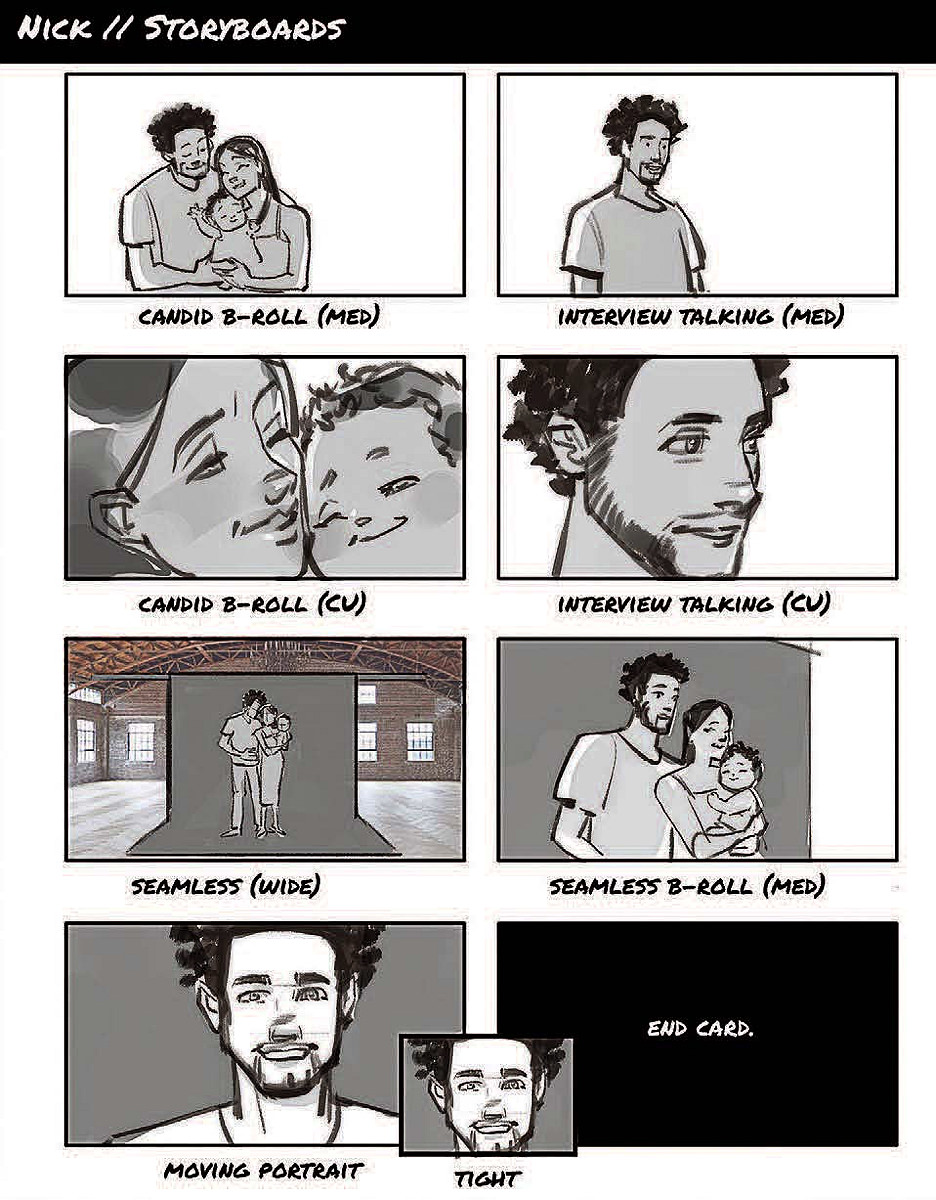
A storyboard for a HealthCare.gov ad
Image courtesy of Susan Bin
After graduation, she stayed in the film industry by storyboarding. Once a script is finished, a storyboarding artist illustrates scenes, specifically focusing on blocking, framing, lighting, and timing. For an animated production, storyboarding is a necessary foundation for animators’ work, whereas in live action, storyboarding is employed to help directors visualize complex scenes (fights and action sequences). In this age of photorealism, storyboards are notably not picture-perfect. Bin avoids “really fine illustration, detailed work—it’s all about expressing the motion, the movement, and the arc.”
Storyboarding represents a break from Bin’s more traditional art-making. While working on a painting, she may spend a whole week workshopping one chicken, go look at 100 trees to figure out how to render one, or draw Matthew McConaughey’s nose 20 times and mark it up with arrows to determine the ideal proportions. But in storyboarding, she moves on as soon as she’s sketched out a scene. In this speedier work, she says the spirit of Impressionism has helped her embrace imperfection: “The whole idea is trying to get the impression of something, which very much vibes with what I like to do.”
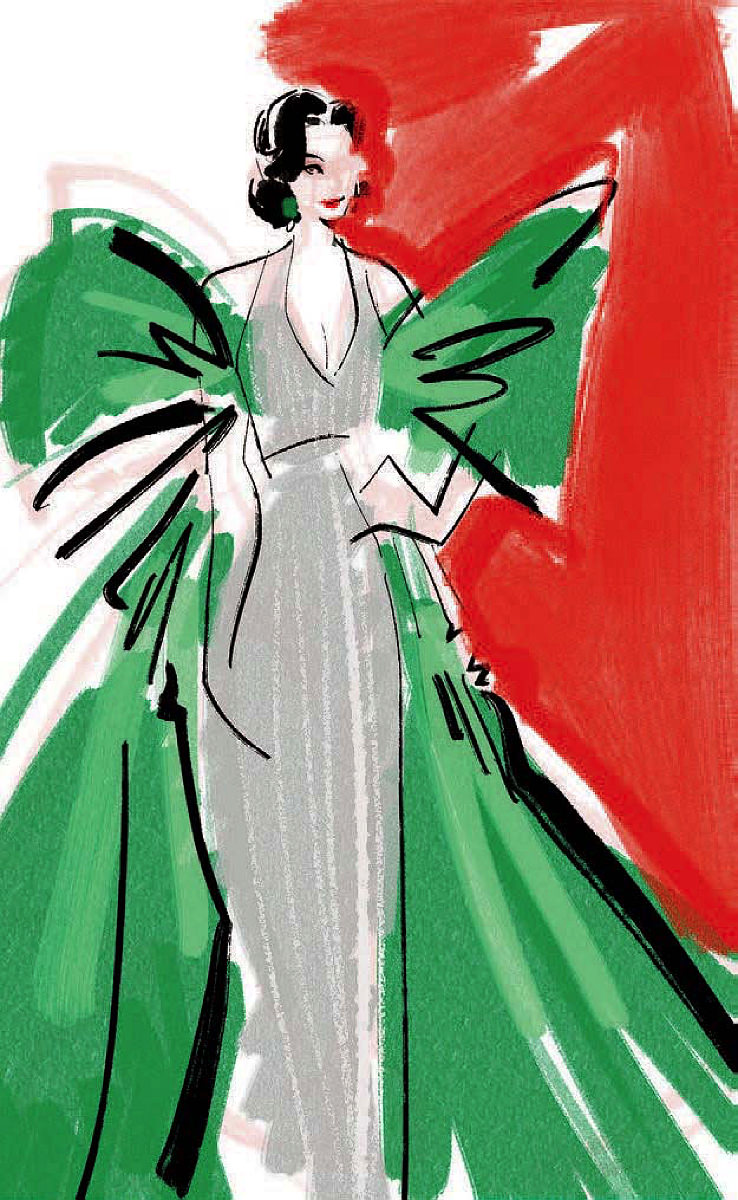
A live fashion illustration
Image courtesy of Susan Bin
That mindset has helped fuel her other artwork, too. For years, Bin obsessed over historical garments and period dress. Now, she does live fashion illustrations, attending shows and drawing the outfits of the models. At the venue, she’ll take out her iPad (it’s impossible to beat the tactility of traditional materials, she says, but when an artist is on the move, a digital canvas is much more convenient) and give herself 20 minutes to create each sketch. “You’re trying to not just capture the true depiction of a garment,” she says. “You’re trying to depict the movement, the flow, the emotion, the drama, the shape.”
Her expressive skill is especially pronounced in courtrooms, where art can help bring out the (sometimes hidden) feelings behind the words in people’s testimonies. Historically, courtroom sketch artists focused on accuracy. But these days, in part thanks to increased courtroom photography, sketch artists can work more directly on depicting “the emotional moments of the day,” Bin says. She goes to cases that interest her—usually high-profile murders and scams. With pencils and paper, Bin draws scenes that almost look lifted from comic book pages. Most of the time, she’ll depict a key individual, highlighting emotions, and leave everyone else roughly sketched. “I like drawing people who don’t know they’re being observed,” says Bin. “A more experienced courtroom sketch artist once described the act of watching, laser-focused for the right moment, as akin to duck hunting.” After creating several individual portraits, Bin will finish the session by drawing a “key piece” that brings together multiple scenes to capture the mood of the day.
Bin’s skills from one project often feed unrelated ventures. The courtroom sketches, for example, are a spin-off from her live fashion illustrations, which derived from her work in costuming, which she started after storyboarding, which she found through animation. “When I’m doing one thing,” Bin says, “it makes my brain whir in another thing and I’ll say, ‘Oh, this is a good note for something else.’”
After feeling overworked at Disney, Bin took a break from making silhouettes. But last fall, she went to the Magic Castle in Los Angeles and watched magicians and card tricksters. As entrancing as the performers’ illusions, she said, were the “showmanship, skillset, and trickery” that they used to capture the attention of the audience. A few days later, deep in a Google rabbit hole, she found out that the only card magician who managed to fool Harry Houdini was Dai Vernon—a silhouette artist. She realized magic tricks and silhouette cutouts aren’t all that different. “You’re entertaining a lot of people, and it involves a lot of sleight of hand,” she says. “I can’t do magic. But for some people, being able to cut something out of a piece of paper is a really entertaining form of magic.”
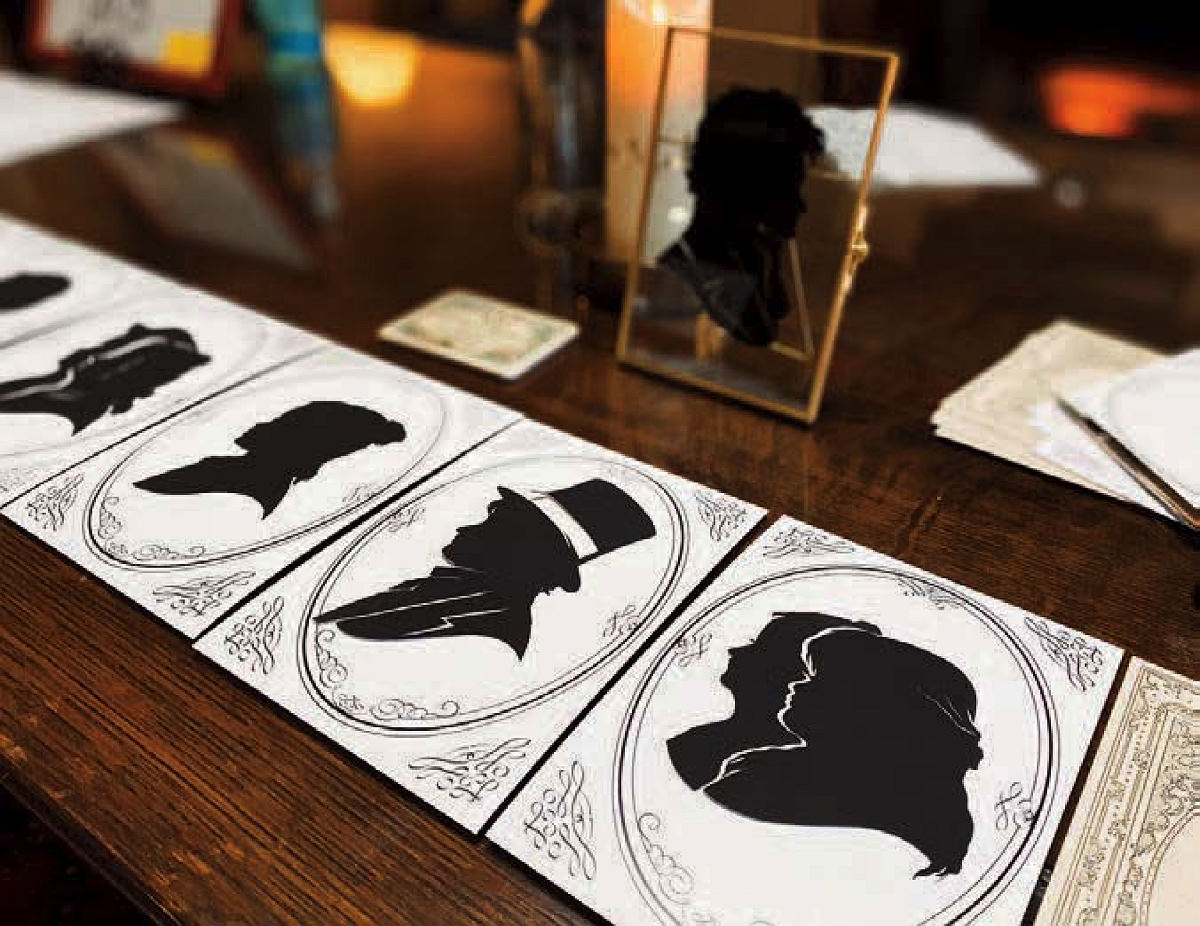
Silhouettes from Susan Bin’s business, “Silhouettes by Suzette”
Image courtesy of Susan Bin
For the first time in years, Bin picked up some black specialty paper and a pair of Metzenbaum surgical scissors (silver and slim, they’re perfect for making fine cuts). Now, she goes around conventions, weddings, and the internet crafting silhouettes. As an art history buff, Bin believes this rare art form deserves more recognition. Silhouettes are more than simple cutouts, she argues. The examples that Americans see every day, in logos ranging from the Federalist Society to the NBA and MLB, inspire questions about what “a proper body” is, she says. “Silhouette art is something that is both fleeting and permanent, and is loaded with questions about the individuals and society it depicts and by whom.” But in the minute Bin takes to cut a silhouette, complexity melts away, and she entrances the subject with her deft skill to create something from nothing.
